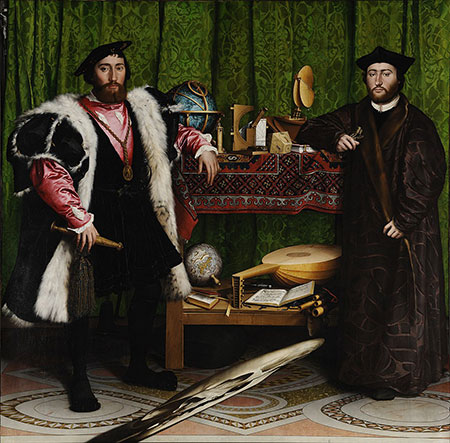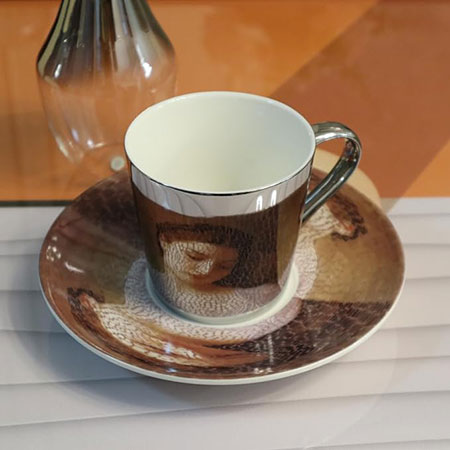Artwork by: Stephan Pabst
Anamorphosis is a perspective technique in visual arts. When you see this optical illusion from the usual point of view, it looks like a distorted image. But the image will become clear from a specific and unconventional angle.
The term anamorphosis comes from Greek roots meaning “to transform.” It refers to an image that looks wildly warped, until you view it from a particular position or through a reflective surface. At that moment, the distortion disappears, and a hidden image reveals itself.
Oblique anamorphosis (perspective)
Images with oblique anamorphosis need to be viewed from a very unusual angle. A famous example in art is the painting The Ambassadors by Hans Holbein.

See large-scale detailed photo of this painting at the Google Art Project
The distorted image on the floor in front of the ambassadors is an anamorphic optical illusion. If you are reading this on your phone, go ahead, close one eye and view this image with your other eye just above the left bottom corner of your phone, almost holding the phone parallel with your eyes (it is specific and unconventional).
You will see something like this:

How does perspective anamorphosis work?
Artists use vanishing points and stretch transformations so that the final image assembles visually when viewed from a specific vantage.
Catoptric Anamorphic illusions (mirror)
To create a catoptric anamorphic optical illusion, you need a cylindrical mirror in the middle of an image. The angles of reflection on a curved surface create the correct image in the mirror. An entertaining item is this mirror cup and saucer set:

How do catoptric anamorphic optical illusions work?
Mirror anamorphosis depends on the properties of cylindrical mirrors—the reflection corrects the stretch on a flat drawing.
How to create your own anamorphic illusion
Trying your first anamorphic illusion can be surprisingly possible. You don’t need fancy tools, just a basic understanding of perspective and a bit of patience.
Start by sketching your design on paper using a grid. Then, draw perspective lines on a new piece of paper that converge toward a single viewpoint. When you copy your original design, you will find that you have to stretch and distort the image to fit the grid.
Now it will appear skewed when viewed from the front. This distortion is what makes the magic happen. Looking from the single viewpoint, you will see your original design get its shape back.
Next, you can transfer your stretched version onto a surface like pavement, a sidewalk, or a wall—chalk, tape, paint, or markers can all work depending on the space and permanence you want. Make sure to mark the exact spot where the viewer or camera should stand. And voila, this is how paintings in a 3D museum are made!
It’s a simple but powerful trick that blends math, art, and visual psychology, all in one.
Tip: Software like Photoshop simplifies the distortion process by automating grid transformations.
Foreshortening
Road markings are often used to describe anamorphosis, but this is not correct.

However, when looking at road markings from up close, you can see that the image is stretched along the length of the road, to make it appear normal-shaped from the usual vantage point. This is why road markings are technically not anamorphic illusions, but use an effect called foreshortening.
